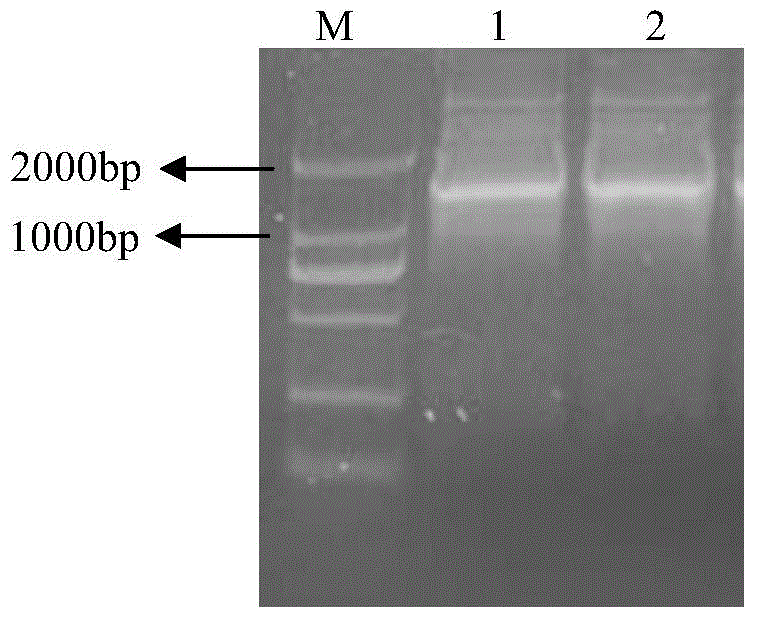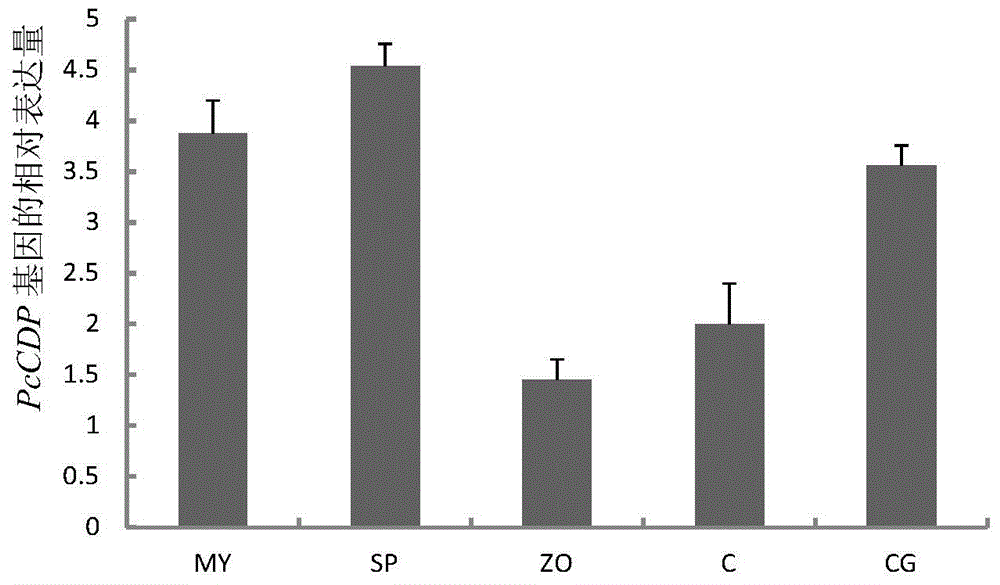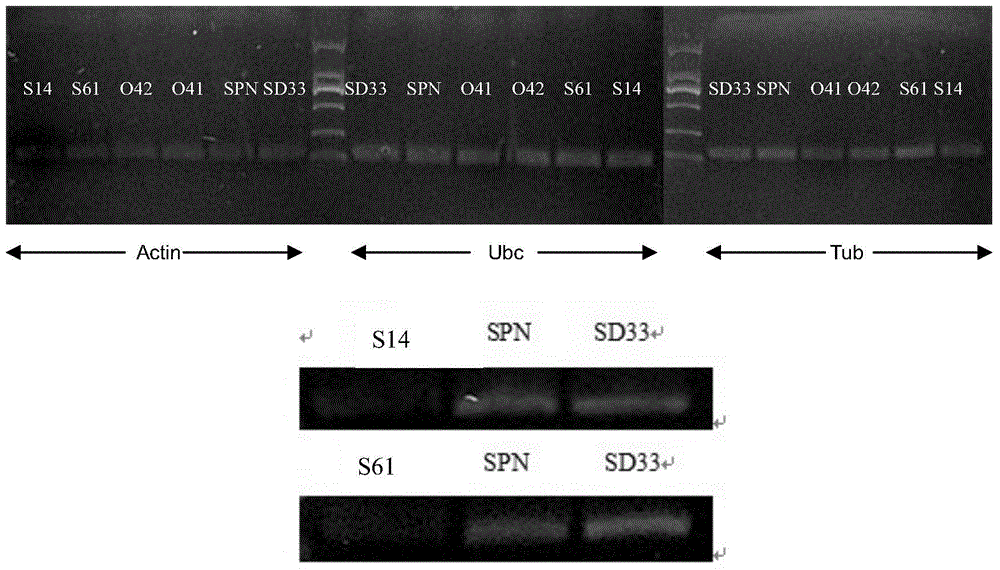Phytophthora capsici cell division protein as well as encoding gene and application thereof
A technology of Phytophthora capsici and coding, applied in the field of genetic engineering, can solve problems such as soil pollution and pesticide residues
- Summary
- Abstract
- Description
- Claims
- Application Information
AI Technical Summary
Problems solved by technology
Method used
Image
Examples
Embodiment 1
[0072] Example 1. Cloning of Phytophthora capsicum PcCDP gene
[0073] 1. Extraction of total RNA from Phytophthora capsicum
[0074] The hyphae of Phytophthora capsicum strain SD33 were collected and ground into powder with liquid nitrogen in a mortar. Then use the kit (QIAGEN RNA Kit) for RNA extraction, the specific steps are as follows:
[0075] (1) Weigh 100 mg of mycelial samples and freeze them in liquid nitrogen.
[0076] (2) Grind into a fine powder in a pre-cooled mortar and transfer to a 2ml centrifuge tube. Note that incomplete grinding can result in severe yield loss.
[0077] (3) After the liquid nitrogen is volatilized (but not thawed), add 450 ml of extraction buffer RLT, vortex to mix, and incubate at 56°C for 1-3 minutes. Note: It is best to add 1 / 100 volume of 14.5M β-mercaptoethanol before RLT is used, and the storage time after adding should not exceed 1 month. RLT solution should be used within 1 month. For high starch content materials, the temperat...
Embodiment 2
[0094] Example 2. Analysis of expression patterns of PcCDP gene in different developmental stages of Phytophthora capsici
[0095] The total RNA of Phytophthora capsici strain SD33 at different developmental stages (mycelium (MY), sporangia (SP), zoospores (ZO), resting spores (C), germinated resting spores (CG)) (extraction method) Refer to Example 1) The cDNA synthesized by reverse transcription is used as a template, and the PcCDP gene is detected by fluorescence quantitative PCR. The β-Actin, β-Tublin and Ubc genes of Phytophthora capsicum were used as internal reference. details as follows:
[0096] Reaction system: 2.5×realMasterMix 8μL; 20×SYBR solution 1μL; forward primer (10μM) 0.5μL; reverse primer (10μM) 0.5μL; cDNA template 2μL; RNase-free dd H 2 O make up to 20 μL. Among them, 2.5×realMasterMix, 20×SYBR solution and RNase-free dd H 2 O is the product in the SuperReal PreMix Plus (SYBR Green) kit (catalog number FP205) produced by Tiangen Biochemical Technology...
Embodiment 3
[0103] Example 3. Obtainment of silencing transformants and overexpression transformants of Phytophthora capsicum PcCDP gene
[0104] 1. Construction of silent expression vector and overexpression vector of Phytophthora capsicum PcCDP gene
[0105] The genomic cDNA of Phytophthora capsici strain SD33 was used as the template, and the primers CDP-SmaI-F and CDP-SmaI-R were used for PCR amplification.
[0106] CDP-SmaI-F: 5'-TCC CCCGGG ATGGCTTCTCGTTGTGCTTC-3' (the underlined part is the recognition site of SmaI, and the subsequent sequence is the 1-20th position of sequence 2);
[0107] CDP-SmaI-R: 5'-TCC CCCGGG TTAAAGCGAGAAAAAGCGGC-3' (the underlined part is the recognition site of SmaI, and the following sequence is the reverse complement of the 1400-1419th position of sequence 2).
[0108] The reaction product was electrophoresed in a 1% agarose gel, and the block containing the target band was recovered. The recovered product was cloned into the pEASY-T3 vector and sent...
PUM
 Login to View More
Login to View More Abstract
Description
Claims
Application Information
 Login to View More
Login to View More - R&D
- Intellectual Property
- Life Sciences
- Materials
- Tech Scout
- Unparalleled Data Quality
- Higher Quality Content
- 60% Fewer Hallucinations
Browse by: Latest US Patents, China's latest patents, Technical Efficacy Thesaurus, Application Domain, Technology Topic, Popular Technical Reports.
© 2025 PatSnap. All rights reserved.Legal|Privacy policy|Modern Slavery Act Transparency Statement|Sitemap|About US| Contact US: help@patsnap.com



